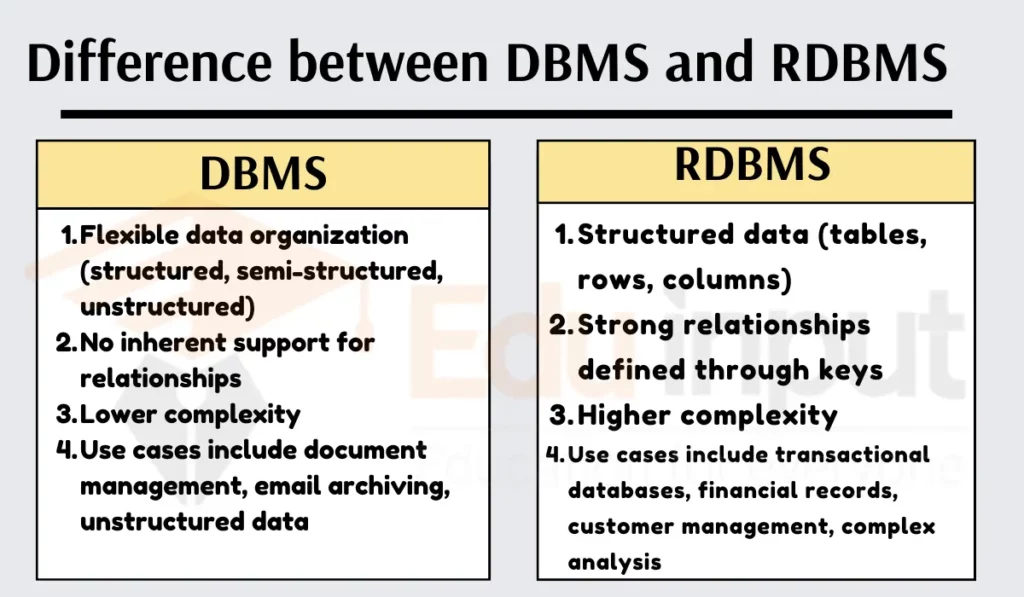Difference between DBMS and RDBMS
The main difference Difference between DBMS and RDBMS is the difference of data model. Database Management System (DBMS) supports various models such as hierarchical and network, while a Relational Database Management System (RDBMS) strictly sticks to the relational data model.

Comparative Analysis of DBMS and RDBMS
1: Data Model
DBMS supports various data models, such as hierarchical and network models, while RDBMS strictly adheres to the relational data model.
2: Flexibility
DBMS offers more flexibility in data storage and retrieval, whereas RDBMS provides less flexibility due to a structured schema suited for clearly defined data requirements.
3: Normalization
DBMS may not always enforce normalization rules, while RDBMS is designed to enforce normalization, ensuring data integrity.
4: Scalability
DBMS is generally less scalable, particularly for large datasets and complex relationships, in contrast to RDBMS, which is generally more scalable, making it suitable for handling large datasets and complex relationships.
5: Query Language
DBMS supports a data manipulation language (DML) for basic operations, whereas RDBMS utilizes a powerful and standardized query language SQL (Structured Query Language), supporting complex queries and transactions.
DBMS vs. RDBMS
| Feature | DBMS | RDBMS |
|---|---|---|
| Data Organization | Flexible (structured, semi-structured, unstructured) | Structured (tables, rows, columns) |
| Relationships | None | Strong, defined through keys |
| Structure | Hierarchical, navigational | Tabular |
| Complexity | Lower | Higher |
| Use Cases | Document management, email archiving, unstructured data | Transactional databases, financial records, customer management, complex analysis |
Also Read:
Is Oracle A Database Management System?
Is Microsoft Excel a Database Management System?
FAQs
What is the difference between RDBMS and non-DBMS?
RDBMS: Stores data in tables (rows and columns) and uses relations between them. Example: MySQL.
Non-RDBMS: Stores data in different formats like documents or key-value pairs, not tables. Example: MongoDB.
What is the full form of DBMS?
The full form of DBMS is a Database Management System.
What does RDBMS stand for?
RDBMS stands for Relational Database Management System.
Who created DBMS?
Charles Bachman created the first DBMS called Integrated Data Store (IDS) in the 1960s.




Leave a Reply